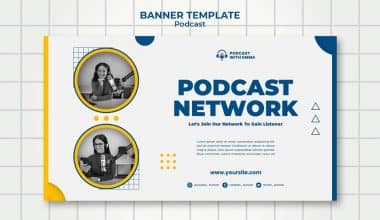I recall the very moment when I recognized the value of content pillars. My team and I were thinking of ways to increase our internet visibility and engagement. We wanted a strategy that would not only entice our target audience but also keep them returning for more. That’s when the idea of content pillars emerged. In this article, I’ll give some brilliant content pillars examples that can help you transform your content strategy and set yourself up for success. These are the examples you wish you had thought of first, and they go beyond what most websites cover.
What are Content Pillars?
Content pillars, also known as cornerstone content, are substantial pieces of content that lay the groundwork for your content strategy. They address big topics in-depth and can be divided into smaller, more concentrated chunks of content. This technique not only boosts SEO but also adds significant value to your audience by providing extensive information on important issues.
Why Do Content Pillars Matter?
Content pillars are important because they assist in structuring your content strategy, making it easier to produce consistent, high-quality content. They also help with SEO by targeting a diverse set of related keywords and offering various entry points for search engines to index your content. According to HubSpot, firms that employ content marketing have a 55% boost in website visitors and a 126% increase in lead generation over those that do not.
Three Main Types of Content Pillars
There are three categories of pillar pages: “Guide,” “What Is,” and “How-To.” We’ll look at examples of each and explain how they work.
To choose the optimal type for your pillar, examine your audience’s search intent (the reason they are entering a given keyword) and change accordingly.
#1. The Guide
A “guide” pillar page often aims to provide the reader with a comprehensive overview of a topic as well as all of the information they want.
Many popular themes for guide pillar pages are evergreen, and they can range from a “101 for beginners” to an “ultimate guide to X.” They can also be as sophisticated as an encyclopedic study of a topic.
The guide’s cluster sections will delve deeper into certain elements of the primary topic, giving authoritative coverage on questions or topics of relevance to the audience.
Example of a Guide Pillar Page
Consider the example of this pillar page from the Southern District of New York.
It ranks on the first page of Google for the keyword phrase “How to file for bankruptcy in New York.”
The content on this pillar page, titled “Understanding Bankruptcy,” provides a high-level overview of bankruptcy law by presenting the primary themes, chapters, and courts involved in both personal and corporate bankruptcy cases.
In a nutshell, it is dedicated and optimized to provide the reader with everything they require in one location, allowing them to find the information they seek as soon as possible.
The left sidebar offers cluster subjects such as free legal consultations, checklists and instructions, filing fee information, and frequently asked questions (FAQs). These parts all serve to support the major pillar topic, bankruptcy law.
The Guide is an excellent structure for providing an overview of a topic and answering your audience’s key questions.
Now let’s take a look at the “What Is” pillar page and some top-performing examples.
#2. The What is
As the name implies, a What Is pillar page aims to thoroughly describe, define, and explain a topic.
This strategy can be useful if you’re trying to rank for a keyword aimed at a beginner audience and are introducing a topic before writing meaningful articles that explore it in depth.
If the subject matter is complex enough, divide the themes or subtopics into chapters and segments.
Content marketers can increase traffic by using this form of pillar page if the targeted keywords have a high search volume. Consider how many times you asked Google, “What is X, Y, or Z?”” and it directed you to a pillar page where you learned everything you needed to know about the subject.
If your topic is evergreen, you can use it to establish a strong backlink profile and promote your expertise in your business or niche.
Example of What Is Pillar Page
Here’s an example we made: “What Is Authoritative Content?” “How It Is Used and How to Create One.”

What makes this so impactful?
A table of contents that links to particular themes explored in more detail throughout the article first and foremost organizes each subtopic.
It follows the “what is,” “types,” and “how it works” structure, addressing the most fundamental principles surrounding authoritative content. However, it does not delve too deeply into the nuances that would be appropriate for a more experienced readership.
Second, the article’s body contains supporting features such as images, videos, and graphs. This provides the reader with two options to digest the content.
Third, these more “snackable” parts are ideal for promoting the core content through social media, email marketing, and other channels.
#3. The How-To
The How-To pillar page aims to educate and empower readers about how to complete a task or solve a problem.
Consider creating a tutorial or step-by-step piece that explains all your audience needs to know about how to accomplish a goal.
Rather than covering a broad topic (such as the guide pillar page), the How-To provides more specific information.
Depending on the topic and search aim, it could be used to describe a procedure for both novice and advanced users.
Example of a How-To Pillar Page
While we’re using legal topics to explain good pillar content strategies, consider this example from Boundless: a page on how to obtain a marriage-based green card.
The pillar page contains an anchored table of contents below the fold that addresses the most critical cluster themes, including dates, eligibility, expenses, forms and fees, and interview process specifics.
The structure of the content cluster is immediately visible, with all important links aggregated on the pillar page and every conceivable connected query and subtopic addressed by the company. All of this provides a wonderful user experience and delivers favorable signals to Google.
The page also includes strong calls to action to encourage the reader to apply right away.
It also contains a variety of content, including recent Trustpilot evaluations, extra resources on marriage green cards, and even an interactive green card checklist quiz.
The page ranks first and second on Google, even outranking Wikipedia!
Now that we’ve covered the three sorts of pillar pages with examples, let’s walk through the process of creating one.
How Can You Create a Pillar Content Strategy for a Website?
The following steps should serve as the foundation for your content pillar strategy:
#1. Determine Your Content Pillar’s Topic and List Topics for Your Cluster Pages
High-performing pillar sites typically have two things in common:
- They tackle a topic that is engaging, relevant, and important to their target audience.
- The keyword has a good search volume and ranking potential.
Begin by researching your audience. To uncover customers’ problem issues, conduct interviews and send out surveys.
Examining customer queries and evaluating social media and community platforms can help you better understand your target audience, and buyer personas can reveal their online activities, demographics, and preferences.
Next, choose a topic for your pillar page that is big enough to support a hub.
Determine the topic of your content pillar
Create a list of high-level subjects that your audience is interested in first. For example, if you are a law practice that specializes in bankruptcy cases, you might begin by creating content that addresses the most common queries and concerns among your clients.
If you want to make this process more data-driven, validate your subjects, and discover similar ideas, use the Topic Research tool on Semrush.
Let us utilize the earlier example. Simply enter a high-level term (such as “bankruptcy”) and the program will create dozens of relevant subtopics and themes.
Subtopics can be filtered by Volume, Difficulty, and Topic Efficiency, which considers search volume as well as rating difficulty.
Now, select topics that have the potential to produce traffic and appear doable for your website. It’s also vital to consider their overall relevance to your audience and your brand’s story or product offering, as well as their potential to become evergreen content.
Make a list of topics for your cluster pages.
Next, create the subjects for your cluster pages.
Assume our bankruptcy law firm is creating a pillar content piece that will be used as a “What Is” resource for its clients. They can develop cluster content based on extremely relevant questions, such as:
- What happens if a person files for bankruptcy?
- How does bankruptcy operate in the United States?
- What are the advantages of declaring bankruptcy?
- What assets may I keep if I declare bankruptcy?
- Which debts can be wiped out in personal bankruptcy?
- Can I become bankrupt because of school loans?
After you’ve defined your subtopics, it’s time to check whether there are any obvious opportunities for optimization.
#2. Examine the existing content on your website
Now that you’ve compiled your list, you should conduct a content audit on your website.
This allows you to assess if you already have pages that could be optimized for your pillar content strategy.
It also helps to avoid creating duplicate content or cannibalizing what you’ve already published.
If you don’t yet have any content, you may need to reverse-engineer the process.
Many content strategies can start with creating the pillar page before moving on to the supporting cluster articles; it all depends on what you already have and what you need to create.
#3. Look at the Competition
Unless you’re creating content on an entirely new topic, there’s a good chance you’ll be competing for the same area.
You’ll want to do comparative content research to uncover gaps, opportunities, and advantages for your own core content.
One of the most effective strategies to outperform the competition is to identify places where you can improve existing content. Topic gaps or thin pages can help you get a jump start on creating something valuable.
Pro Tip: Download the Competitive Analysis Template, which provides a step-by-step guidance to conducting content analysis.
Use it to carry out the following workflow:
- Analyze your competitors’ core content strategy aspects.
- Drive concepts and set standards for your own strategy.
- Summarize critical findings and generate actionable insights.
#4. Create Your Content Pillar
Now that you’ve discovered your major topic and clusters, as well as a chance to stand out from your competition, it’s time to get started on creating content!
Plan the structure of your pillar page.
The next step is to collect all of the questions that your pillar page will attempt to address and utilize them to construct the structure of the article.
Begin by searching for your goal keywords and reviewing the content that appears on the first page of results.
Make a note of the structure and format of those pages, as well as the subsections and questions addressed there.
You can also browse the “people also ask,” “things to know,” and “related searches” categories.
For example:
This stage can be automated by utilizing AI content writing tools such as ContentShake.
To quickly create a high-performing outline, choose one of the program’s suggested content ideas or add your own.
You’ll also receive suggestions for headlines, keywords, introductions, and other content to put in your post.
ContentShake will also recommend the best length for your blog article and generate a list of target keywords.
After you’ve created your content and are ready to go, it’s time to discuss the necessity of interlinking, promotion, and distribution.
#5. Link your pillar and cluster content
Interlinking your cluster content to your pillar page (and between cluster pages) is critical for your information architecture.
To see this in action, visit Apple’s iPhone-specific pillar website. It includes all of the relevant information, such as device specifications and comparisons, price plans, and carrier services.
It also links to cluster pages that answer specific queries related to the search intent—for example, articles explaining how to switch to an iPhone or qualify for a trade-in.
Apple’s pillar page contains all of the information a user requires in one location, and the interlinking structure adds richer context to search engines.
#6. Distribute and promote your pillar content
Even if your content is exceptional, it will serve no purpose if it is not discoverable.
That is why a content distribution plan should be an essential component of your content strategy. You wouldn’t spend 50 hours creating content just to publish it once, right?
There are numerous channels and strategies for internally and externally promoting your pillar content. Here are some of the first locations where you may start driving traffic to your content:
1. Social Media
Pillars and clusters give social media marketers a significant advantage in filling up their content calendars. Pillars are rich with content that can be broken down and repurposed for your social media audience. And if your content revolves around an evergreen topic or idea, all the better.
Looking back to Boundless’ guide to marriage-based green cards, they successfully extract essential ideas and information from their pillar page and repurpose them for their social audience.
Here’s an example of cluster content that was repurposed into a video post on Facebook:
You can use alternative material, visuals, and calls-to-action to disseminate and market your content indefinitely. If you have a budget for paid advertising, consider upgrading your top-performing organic articles to reach new audiences and broaden your reach.
2. Email Blasts
According to Content Marketing Institute data, 87% of B2B and 76% of B2C marketers use email as an organic marketing channel. As a result, it is one of the most preferred methods for delivering content to a targeted audience.
Consider promoting specific key issues and creating many email newsletters to entice your email subscribers to return to your website.
It might not only produce quick leads, but it could also promote your subject matter knowledge and increase visitors to your website.
3. Pitch to influencers
Reach out to bloggers, opinion leaders, and other relevant influencers who may be interested in sharing your content. Using the Backlink Gap Tool, you may find linking opportunities based on your top competitors and design an outreach strategy.
Don’t just present your pillar content as a package; instead, highlight individual cluster subjects, pages, graphics, and other pieces that a backlink prospect may be interested in.
As a general rule, your pillar content has the best chance of generating a large number of backlinks because it covers the issue in depth.
You could even pitch an official news release and promote it through a content distribution or wire service to reach specific audiences or geographies based on your business goals.
Social Media Content Pillars Examples
Let’s look at some real-life content pillars examples to help you plan your strategy:
#1. Hubspot
Hubspot’s social media content pillars include blog posts, e-books, webinars, and courses covering inbound marketing, sales, and customer care. Their content is insightful, data-driven, and visually appealing, making it easily shareable and entertaining.
#2. Salesforce
Salesforce is a cloud-based customer relationship management (CRM) software provider. Their social media content pillars are digital transformation, client success stories, and thought leadership on the future of business technology.
#3. Buzzfeed
Buzzfeed’s social media content pillars include viral quizzes, lists, and videos covering pop culture, news, and entertainment. Their content is widely shareable and appealing to a diverse audience, establishing them as one of the most successful social media companies.
Key Takeaways
- Creating extensive, in-depth tutorials on a wide topics will help you establish yourself as an industry expert and drastically improve your SEO.
- Sharing personal stories and experiences makes your content more relatable and interesting, thereby fostering a relationship with your audience.
- Cover a variety of subtopics inside your content pillars to provide complete information that addresses your audience’s different needs.
- Using templates can help you speed the content development process, maintain consistency, and ensure high-quality results.
- To enhance the effectiveness of your content pillars, analyze their performance continuously and make data-driven improvements.
Conclusion
Creating successful content pillars is a powerful strategy for increasing growth and engagement. By investing in detailed instructions, leveraging personal experiences, and applying content templates, you can generate content that resonates with your audience while also improving your SEO. Are you prepared to elevate your content strategy to the next level? Which content pillar will you establish first? Share your ideas, and let’s talk about how we can all benefit from these brilliant content pillar examples.
Related Articles
- 10 Powerful Content Localization Tips from Top Marketing Experts
- Proven SaaS Content Marketing Tactics for Boosting Engagement and Conversions
- How to Create Promotional Content That Drives Results for Your Brand(Plus Examples)
- E-commerce Content Marketing: The Explosive Strategy Disrupting Online Sales
- Content Performance Made Easy: Simple Content Performance Tips






